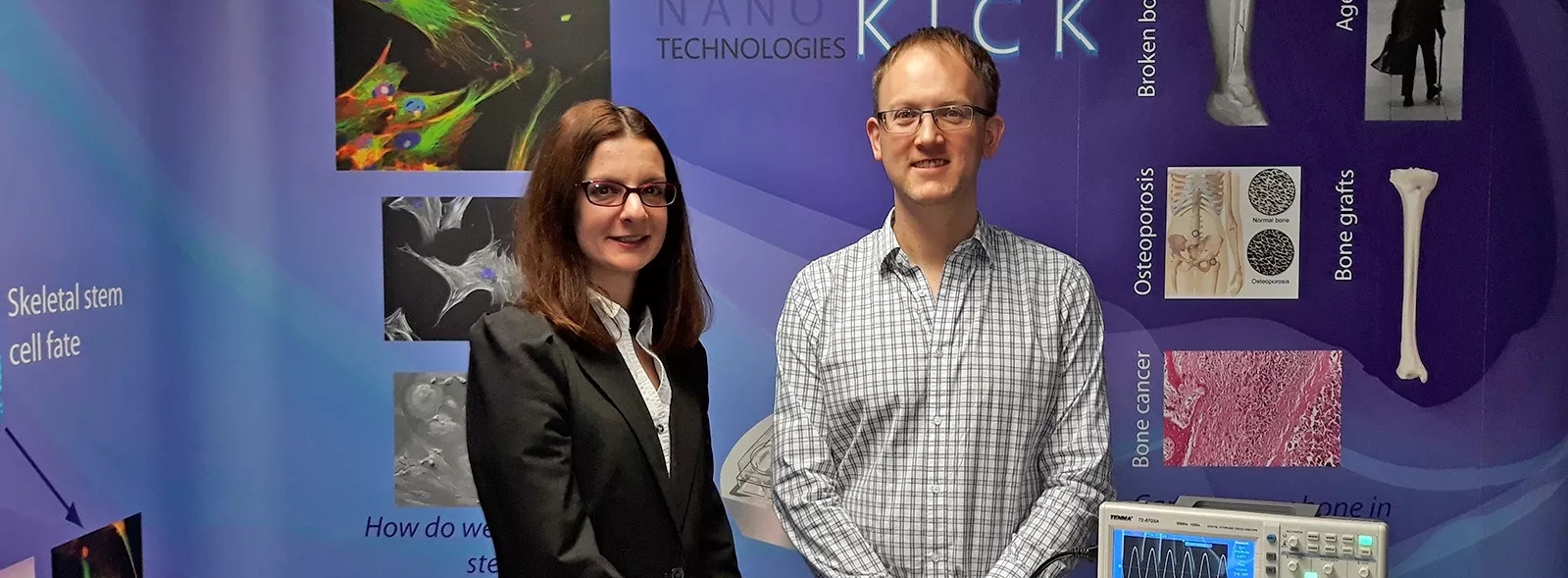
The study, which is led by Professor Stuart Reid and which shows ‘enormous promise’ according to UK Science Minister Chris Skidmore, will apply nanoscale vibrations to patients with spinal injuries in an attempt to slow down and reverse the effects of disuse osteoporosis.
This bone loss results from insufficient stresses and strains in the bones following disuse, which weakens the bones in the paralysed limbs and makes them more susceptible to fractures.
Nanoscale vibrations
Professor Reid, who is the co-inventor of nanokicking technology where precise nanoscale vibrations are used to control the behaviour of adult stem cells, said: “These precise nanoscale vibrations have been shown to control the behaviour of adult stem cells which can then be used to start the growth of bone in the laboratory from a patient's own cells.
The lab-based experiments on stem cells have been remarkably repeatable across several labs in the UK and the trial will investigate whether it will work in patients.”
Enormous promise
Science Minister Chris Skidmore said: “Osteoporosis can be a devastating condition for the three million people that suffer from it across the UK. This research shows enormous promise of slowing down and even reversing the disease.
“The Government’s modern Industrial Strategy aims to harness medical innovations to help people have the most advanced treatment and meet the needs of our ageing society.”
Bone density loss can be extremely fast for people who have suffered severe sudden paralysis and developing treatments to help promote healthy bones and minimise fractures, is vitally important.
Although there are existing techniques to persuade stem cells to become bone, they involve complex and expensive engineering or chemicals.
Spinal injury patients
The research team will apply the same type of vibration they have been applying to single cells in the laboratory to patient’s legs. Around 15 volunteer patients from the National Spinal Injuries Unit based at the Queen Elizabeth University Hospital in Glasgow will be invited to take part in the project over the coming two years.
The project’s co-lead Dr Sylvie Coupaud, who has experience of rehabilitation interventions in patients with spinal cord injuries, said: “There is currently no effective approach to treating osteoporosis in these patients - it is diagnosed but not treated.
“Working closely with the spinal injuries unit, we have already developed robust methods to identify the onset of osteoporosis within weeks of injury, and we are now looking forward to producing effective interventions for patients, to slow the bone loss before a fracture occurs.”
Dr Mariel Purcell, Consultant in Spinal Injuries at the Queen Elizabeth National Spinal Injuries Unit, said: “Spinal injury induced paralysis impacts around 50,000 people in the UK alone, and we are excited to be partners in this first investigation of nanokicking to help treat osteoporosis in these individuals.”
According to the National Osteoporosis Society, more than three million people in the UK are estimated to have osteoporosis, which causes around 500,000 broken bones every year.
The disease typically develops slowly over several years and is linked to the stem cells in the bone turning to fat rather than bone - it is often nicknamed ‘fat of the bone.’
The experiments could mean that the technology could be used to develop new therapies to help those who already suffer from the condition and also prevent those at risk from ever developing it.
UK Space Agency
The team are keeping the UK Space Agency informed of the research and Professor Reid, from the University’s Biomedical Engineering department, added: “If we get positive results then there will be an immediate scale up of the project and we will see how we can roll this out for the benefit of the wider population and not just those with spinal injuries.”
The technology could also eventually be used for astronauts on the International Space Station, who similarly lose bone density because of reduced gravity and the associated lack of loading on their bones.
Professor Matt Dalby, the co-inventor of the ‘nanokicking’ technology, was involved in the original stem cell research and is part of the investigator team on this latest project, along with Dr John Riddell, who leads on the biological investigation, both from the University of Glasgow.
Dr Riddell, an expert in neuroscience and in the study of spinal cord injury, said: “It is exciting being part of the first clinical study using ‘nanokicking’ technology directly on patients.”
The two year project has received funding of almost £350,000 from the Science and Technology Facilities Council (STFC), part of UK Research and Innovation, an independent part of the Department for Business, Energy & Industrial Strategy (BEIS).
STFC funds UK research in areas including particle physics, nuclear physics, space science and astronomy.


